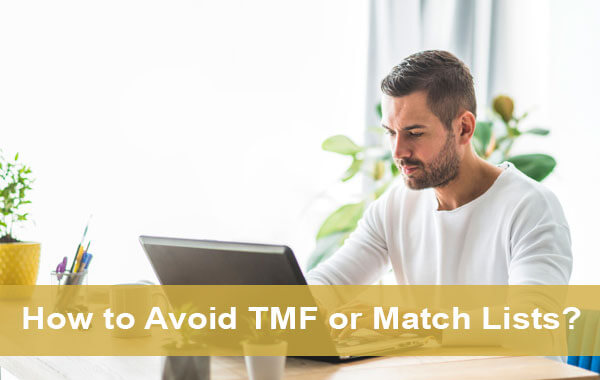How to Avoid TMF or Match Lists?
TMF, MATCH file and GNF:
One of the most challenging things a merchant faces is going on the blacklist by the credit card companies, such as Visa/ Mastercard. This blacklist is famously known as “TMF or MATCH” list. This makes it very difficult to get a merchant account anywhere around the globe, especially, if it is a high-risk merchant account. Second to that is being put on the GNF list, which is Group Negative File. However, it is not as severe but has its own consequences.
Match file is like a blacklist that banks can cross-check when they take on a new business. The match is a system created and managed by MasterCard. It is a database that contains information about businesses, which have gone through the phase of a fraud or a chargeback and has been terminated for many reasons. TMF Terminated Merchant File is another term, which is coined by Visa is just a synonym of MATCH.
GNF, Group Negative File, is First Data’s internal list of businesses that they have had any kind of issue with them before and no longer want to do business with them. This might not be a fraud case; you might be listed on it because of the closing of your first data account.
How to get off TMF List?
If you find your business on the TMF or MATCH List, and you need to know how you got listed, reach out to your service provider and they can help you understand the exact reason.
You need to contact the previous bank with whom you had merchant services previously. Request them to give you the reason and reason code under which you were added to the MATCH.
You should know from the bank how to get off the MATCH or TMF. MasterCard, in general, puts the merchant for 5 years in the MATCH list. In case of fraud, you are highly unlikely to get off the list. Then, you do not have any option than incorporating a new company.
Why are Merchants added to MATCH or TMF?
- Having a huge number of chargebacks on a monthly basis.
- The merchant owes money to the bank.
- Merchant caught practicing fraudulent activity such as money laundering.
- Illegal-product or Advertisement.
- Disclosing information of profit to the customer.
- All in all, violating the terms of a Merchant Account.
What should a Merchant do to avoid these lists?
- Never try any kind of fraud from your as well as your teams end.
- Pay the debts on time and try not to owe any money to the bank.
- Decrease the number of chargebacks.
- Get an expert who can manage these for you.
![]()
Email us anytime!
Email customer service 24/7
![]()
Call us anytime!
Reach customer care 24/7 at +1 (727) 330-3944
What to do to get off the Match List?
The only company that can get you off the list is the company that put you on it.
Mostly, the merchant only learns that their business is on the MATCH is when they apply for a merchant account with another merchant service provider.
You should reach out to the previous service provider and ask him about the reason, and you can be referred to the acquiring bank itself; you may have to make diligent calls and be patient in this situation.
If a business was placed on the MATCH for high chargeback ratio, the processor needs to know that they are not going to get stuck with bills from the merchant’s former customers chargebacks.
Getting with the wrong service provider who does not understand your business is way more harmful than getting on the TMF or MATCH itself.
Get your business a team who understands your vertical and supports throughout your business tenure.
For more information visit: www.merchantstronghold.com
or email us at: info@merchantstronghold.com





